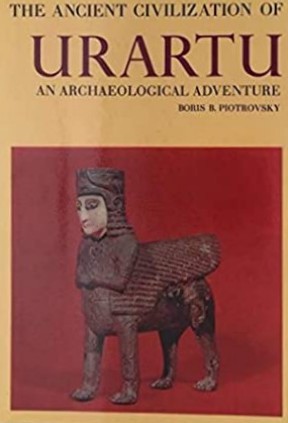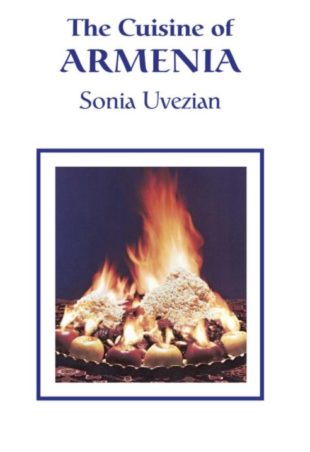The Cuisine of Armenia – Introduction
The Cuisine of Armenia by Sonia Uvezian deserves its place in every food lover’s library because it clearly and precisely explains the vibrant and exciting dishes that comprise the cuisine of this now small country that sits at the crossroads of the world.
Before we reviewed The Cuisine of Armenia we thought we should understand more about this fascinating country and the influences that have driven its geo-political circumstances and how the cuisine has been influenced by its geography, climate and history.
We discovered that it is certainly a very old country with its civilisation dating back to the start of recorded history and at times covering huge swathes of Turkey, present day Armenia, Georgia, Azerbaijan and parts of Iran running from the Black Sea almost to the Caspian Sea and the Mediterranean. Now it has been reduced to a tiny, land-locked country based around the capital Yerevan.
Traces of major buildings, roads and canals built by the forebears of the Armenians can be traced back to the 4th millennium BC.
We also know that Armenia was exporting wine to Babylon a long time ago because Herodotus included a very detailed description about how the wine was brought down the Tigris River in his The Histories. We have a very easy to read translation by George Rawlinson which describes what Herodotus wrote, remembering that he lived from 484 to 425 BC.
The boats which come down the river to Babylon are circular, and made of skins. The frames, which are of willow, are cut in the country of the Armenians above Assyria, and on these, which serve for hulls, a covering of skins is stretched outside, and thus the boats are made, without either stem or stern, quite round like a shield. They are then entirely filled with straw, and their cargo is put on board, after which they are suffered to float down the stream. Their chief freight is wine, stored in casks made of the wood of the palm-tree.
Herodotus
The above quote shows the inventiveness of the Armenians in exporting their produce. Herodotus goes on to say that once the wine was delivered, the traders loaded the skins on their horses and rode back to Armenia!
This inventiveness was widespread and there certainly were skilled engineers within the citadel of Tushpa, the main town of the kingdom of Urartu close to the shores of Lake Van now in eastern Turkey, with the design being a major feat of engineering that kept out invaders from all sides. Similarly the land was made fertile through the construction of a long canal called the Canal of Semiramis which brought water to valleys for the production of food crops.
Reading the book The Ancient Civilization of Urartu by Russian Boris Piotrovskii, an archaeologist who studied the citadel, provides a good understanding of the history and development of this fascinating region.

It also makes it clear that there was a sophisticated system of agriculture and wine making from a very early age. In fact, according to Piotrovskii in Chapter 3, the town even had a special building to store wine:
To the north of the courtyard were various buildings, including rooms with central columns and store-rooms for wine and other produce. In the wine-cellars were large earthenware jars, some of them with a capacity of more than 200 gallons, sunk into the earth floor. On the north side of the palace was another open courtyard surrounded by a number of small rooms. The eastern part of the citadel was occupied by a large building with a pillared central chamber for the storage of wine. This was surrounded by small store-rooms, some of them used as granaries.
Boris Piotrovskii
So it is clear that there is a long history of advanced engineering, food storage and fertile farms in this region and this is what Uvezian is documenting for us now.
The Cuisine of Armenia – The Book
The introduction to The Cuisine of Armenia gives a good history of the culture of Armenia as well as a brief history of the area.
The book is then divided into the normal Soup, Fish, Poultry, Meat etc chapters of recipes, however there are less common chapters such as a very good one on the pervasive Keufteh, another on Savoury Pastries and another on Pilafs.
One of the first recipes in The Cuisine of Armenia that caught our eye was for Jajik. This is a refreshing dish of cucumber and yoghurt soup, variations of which can be found throughout the Middle East and around the Mediterranean. This is a simple yet interesting recipe and it is worth pointing out here that Uvezian is also an expert on the topic of yoghurt having published a very good book on this topic as well.
We also liked the recipe for Izmir Keufteh which sees minced lamb, soaked bread, egg, garlic, cumin, cinnamon, red pepper, salt and black pepper kneaded into balls, fried in a skillet and then simmered in a tomato and green pepper sauce.
The Cuisine of Armenia also contains a recipe that intrigued us that Uvezian calls a ‘classic’ appetiser which sees a paste of meat, herbs and spices wrapped around a hard boiled egg. Did the inspiration for Scotch eggs come from this part of the world?
If you are a vegetarian then there are many interesting and tasty recipes in The Cuisine of Armenia that contain no meat ingredients.
Cuisine of Armenia is a classic cookbook that faithfully represents the cuisine of Armenia and is playing a great role in explaining the treasures from Armenia to the rest of the world.
Because this book opens a window on a region that has a dearth of cookbooks we believe that it deserves a place in the Foodtourist Top Fifty Cookbooks.
We also think it is worth checking out her The Book of Yogurt which is an excellent survey of yogurt recipes from throughout the world.
You can buy The Cuisine of Armenia by clicking on the link below. We receive a small percentage of the sale which goes towards maintaining this site.






















